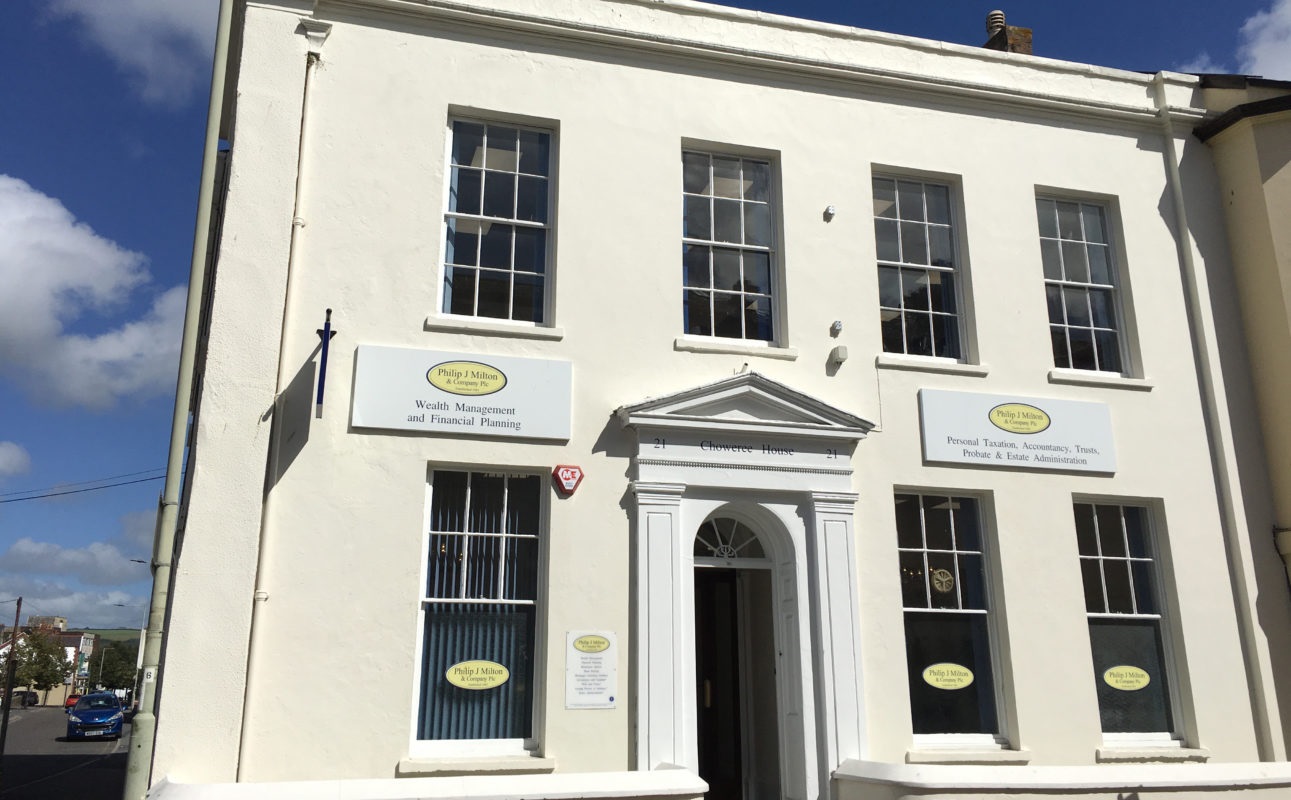It hasn’t been noted prominently anywhere but despite recent slippage, Sterling had been quietly moving forwards. It has been at the highest against the US Dollar since July last year; a few more cents and it will be the highest since April 2022. It even pushed higher against the Euro too, its highest since August 2022. A few more cents there and it will be April 2016’s levels!
However, a new high for the US market and optimism from the Fed and here on lower interest rates (and several cuts) soon has taken the top from that progression.
Is strong Sterling good for us? Probably yes, it cuts imported inflation (as prices of imports fall). Most commodities are priced in Dollars too. It makes your overseas’ shares fall in value of course (and their income) and makes UK shares more attractive to overseas’ investors if they believe the trajectory is upwards for Sterling. It is also a reflection on a prudent (boring?) Chancellor and indeed a belief that yes, the economy has turned that corner and from the sentiment I feel, I think he is right.
Corporate Chartered Status CII

We are pleased to announce that the Firm’s Corporate Chartered status has been renewed again, still the only such firm in our area. It does seem to be an ever harder status to achieve and to retain, so well done to the whole team on the accolade and one which holds us in great stead with our clients too.
Gone US

I know, the record seems stuck but… the US concentration in so few companies is now the highest ever, above pre-Dotcom bubble levels and the Great Depression’s 1929 peak.
The market ‘value’ of the biggest 10% of companies now exceeds 75% of the whole of the S&P 500 index and at 750 times the 75th percentile stock in the list. In 2000 that was ‘only’ 550 times. Four years ago, it was a mere 400 times. It is even ‘worse’ than the 1929/32 crash in that then it was the Dow Jones with a mere 20 stocks. Curiously (logically?) the lowest stock concentration of the biggest was at the lowest point of the market in 1932. When the ‘magnificent seven’ are ‘worth’ more than the markets of Japan, UK, France, Canada and China altogether… Is that screaming something at us?
Curiously, technological advances have often propelled markets into bubble territory as people throw excessive sums at new concepts, often intangible ideas which are ethereal to great extent; no doubting they come good but at what price? In 1929 it was radio and electricity, in 1999/2000 the internet, computer software and telephony and now it is all about artificial intelligence. These things are clearly fantastic but in time, as the technology is rolled-out, their ‘values’ revert to utility applications. Some firms will go bust and many will survive and thrive, but at what value as others enter the fray?
The fear now is that the vast sums push values to astronomical levels where ‘investing’ is gambling and not fundamental appraisal of the real underlying values – a fear of having to be there only to avoid missing-out. It is a very brave choice to avoid such exposures in favour of more fundamentally under-valued assets as the majority eschews presently…
Global dividends

In all the speculative froth driving capital growth assets to spiralling heights, according to Janus Henderson’s research, global dividends from underlying businesses hit a record level of $1.66trillion last year, 5.6% higher than 2022. This is the share of the real, underlying profits businesses made and which they pay to shareholders, their investors. Whilst there are always a few ‘special dividends’ amongst them, the majority is payment for the use of the investors’ capital effectively, the rent money from the ‘investment house’.
A total of 86% of companies (83% of British companies) either maintained or increased their payments too and the sum grew despite a couple of big cuts from some multinationals and miners. HSBC is the biggest UK payer again and banks generally delivered record payments (and which exceeded cuts from miners).
This means ‘sensible’ investors can have broadly based, ‘balanced’ portfolios and enjoy a great income which has also been increasing consistently over time and which should continue doing so, regardless of interest rates on deposits for example. These gains should in time keep pace with and indeed exceed inflation too. So, if you only spend the income, you don’t have to worry about what is happening to the capital values daily.
Our own income yields from the collection of assets we hold for clients is amongst the highest levels they have ever been as there is so much value amongst myriad asset classes presently – and not from the momentum plays pushing main stocks higher.
The UK market

Thank you Tom Stevenson of the Daily Telegraph (14 March) for reminding us about the UK market and sharing optimism for improvement.
Here are some facts to sober investors! So from 3/3/09 to 22/6/16, the day before the referendum, £100 in the S&P500 would be worth £350 after dividends reinvested. On the FTSE250, a good reflection of the UK (with fewer multinationals within), the figure would have been £355. In the nearly eight years since, the S&P500 has turned £100 into £281 whereas the FTSE250 is £140. The UK trades on a lowly multiple of 11 times earnings whereas the US is on a frothy 20 times (the tech stocks are way above that of course).
What is fascinating too is that different market types and structures apart, previously the difference in outcomes from the two markets was minor. This suggests that the UK is undeniably far too cheap and the US far too dear and a meeting somewhere between these extremes is likely. As I have said too, investment is often more about limiting downside risk as much as it is chasing dreams on speculative investor euphoria. When the trend changes, woe betide those trampled in the inevitable melee… lots of innocents (with holdings like passive, index-trackers they thought were lower risk) will have a shock.
AI

We are trialling AI work possibilities presently and it is fascinating and fantastic what is feasible. I have spoken already to an AI call handler at Metrobank (very good and far better than a barrage of ‘push button x for whatever’) and we had an Investment Committee meeting last week (three of us remotely, everyone else physical) and it was recorded and without error, it recounted all the major points and also ‘action items’ and made a mere three ‘mistakes’, such as misspelling ‘Abrdn’ (I think the silly spelling was that Company’s mistake in the first place…)
Our minutes will be lengthier but what a great base document! It generated that in 30 seconds… I shall look forward to seeing how it can be integrated into helping us in myriad ways but of course, care is needed too as protections are imperative! No, it can’t and doesn’t make our investment decisions, I hasten to add!
Investment Trust discounts
 Readers will know our affinity with this investment medium, where the shares of the Trust can (and usually do) trade at a price lower than the value of all the assets they manage. This will lead to ‘performance’ being different from the results of the portfolio of assets held, either negatively sometimes or positively (especially if a Trust closes-down as we have enjoyed on many occasions over the last few years).
Readers will know our affinity with this investment medium, where the shares of the Trust can (and usually do) trade at a price lower than the value of all the assets they manage. This will lead to ‘performance’ being different from the results of the portfolio of assets held, either negatively sometimes or positively (especially if a Trust closes-down as we have enjoyed on many occasions over the last few years).
How does this manifest itself in a specific example, where we may have bought the Trust’s shares at a deep discount to the assets held? Majedie Investment Trust had ‘always’ been trading at a wide discount, one of the reasons we acquired it. However, with a change of management, a new life began and the discount has been narrowing quite dramatically. So what has happened is that not only have we enjoyed the underlying performance from the assets held but we have had an extra boost as the underlying discount has shrunk significantly. Using an extreme example, on 4 March 2022, the shares traded at a discount of 26% to the value of the assets. On 26 February 2024 that had fallen to 12% and since has reduced even more. This means that over that time the shares we own rose by an extra 14 points from the discount shrinkage. However, the way it works is that the value uplift is on the share price (not the net asset value of course) so whilst the value of all the underlying assets has risen by 12p (a mere 5%), our shares have risen by 25%!
There are other reasons for holding a Trust but this ‘extra’ opportunity (not always unlockable) is attractive and there for ‘nothing’. Regardless of the income we have had too, on the example here the return in sentiment for the Trust gave an extra 20% real return. If all we held was unitised funds (as most investors do, based on the vast sums in them versus Investment Trusts), they can never receive a bonus from this simple situation. If Majedie wound-up altogether then the increase would not have been 20% but 43% (before nominal costs of liquidation). However, I wish Majedie all ongoing success even if we might ‘feed the ducks’ and move onto the next deep discount opportunity for tomorrow.
Curiously the AIC has just produced its own research noting:- ‘Our research released this week shows that investing when discounts are more than 10% can lead to better returns in the following years’. I suppose it is stating the obvious – the better the value something is, the greater the likely returns in the future (and vice versa). It goes on to emulate what I have been saying for a long time… ‘Clearly, periods of wide discounts often correspond to lower underlying valuations, leading to the famous ‘double-whammy’ effect that we are all eagerly waiting for. The average investment trust discount sits at 11% at the moment’.
It is interesting too when too many concentrate upon the headline cost figures thrown at them and not the value they are enjoying. For example, ‘tracker funds are cheaper’ but if, as with Majedie, you have been able to earn an extra 20% from discount shrinkage over just a few years, what is that worth in percentage charges each year? However, you will never see such ‘saving’ on any cost comparison – please don’t cut-off-nose-to-spite-face!
Titivation
 In case you were wondering… but to help the Town look smart and also to show we have pride in our buildings, we are in the throes of refurbishing the outside of Choweree House and also the old offices which are up for sale. The District Council incentivised owners a little to do their bit to make the Town look well-kept and it stimulated us to do a much bigger job; with Choweree and its height, the scaffolding alone was quite a mammoth task and we need to repair the two chimneys as well which, for a listed building, remain a feature to be kept despite their obsolescence (and yes, we are obliged to submit a Listed Buildings Consent application too).
In case you were wondering… but to help the Town look smart and also to show we have pride in our buildings, we are in the throes of refurbishing the outside of Choweree House and also the old offices which are up for sale. The District Council incentivised owners a little to do their bit to make the Town look well-kept and it stimulated us to do a much bigger job; with Choweree and its height, the scaffolding alone was quite a mammoth task and we need to repair the two chimneys as well which, for a listed building, remain a feature to be kept despite their obsolescence (and yes, we are obliged to submit a Listed Buildings Consent application too).
We hope this hasn’t inconvenienced anyone, but that through the other side, the Building will better reflect the care, attention to detail and overall pride which we hope we demonstrate in the service we offer to our clients too of course. After all, these things are inter-linked, even if the cost to us is not insignificant! We’ll publish some pictures when all done.
(NOTE: Of course the picture above is from our pre-scaffold days!)
Good news, bad news

So what on earth is going-on at Capita? The once growth darling of the Stockmarket is languishing at below 13p. We didn’t hold it at its over-priced peaks (£7.95 on 31/3/2015!) but certainly we have lost money more recently and down to these levels. Vanquis Banking (the old Provident Financial) also noted a surge in complaints from certain claims-chasing entities and the administrative work attending to these is hitting hard so the shares plummeted. Whilst a Cayman Islands’ investor has used the slump to acquire a useful stake, uncertainly will abound for some while.
I mentioned Reckitt Benckiser the other week – who could have predicted the US court outcome against its Mead Johnson subsidiary (only bought in 2017 – for $18billion)? That has really knocked the shares and despite a robust defence and significant value in other parts, they sank and may continue in the doldrums for some time. This is a lesson in not holding too much of any share, however ‘blue chip’ you may imagine them to be.
Regional REIT also slumped with the Board’s confirmation it is seeking ways to finance the £50million retail bond maturing in the summer and which could include issuing more shares. At these levels (tipped by the Telegraph’s Questor pundits at over £1 I read last week), if the Trust is going to survive it is very much a steal at the present 17p – and it declared a quarterly 1.2p dividend last month too! Digital9 Infrastructure at 22p is in a like state – the sale of its Icelandic plant has progressed (with further proceeds according to results) but all debt has been cleared. You could have bought these for £1.29 in the euphoric stages of the investment concept – we didn’t.
What else? Dark Trace surprised the market with better results and a hefty jump in the share price ensued. McBride has also temporarily become our largest direct equity after delivering strong results and the shares are now over £1 – we have been trimming but might need to escalate that to cut the risk and being ‘boringly’ prudent – they had been as low as 15p and we chased them there and hence why it is now our biggest direct share.
Have you been watching bullion too – silver is an interesting play presently and it is trying hard to break-through chart resistance.
My best wishes
Philip J Milton DipFS CFPCM Chartered MCSI FPFS FCIB
Chartered Wealth Manager
Fellow Of The Personal Finance Society, Fellow Of The Chartered Institute Of Bankers





